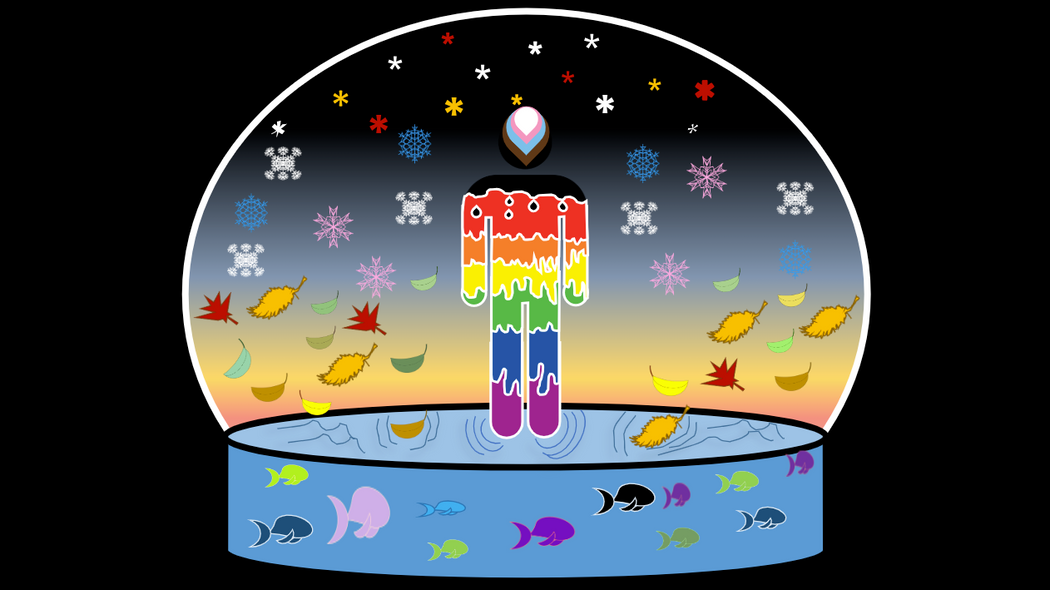“We can thus only imagine what, if anything, these scientists gained from their periods of relative solitude, surrounded on all sides by leaves and snow, fish and stars.”
In the third of Sciety's Pride Month series, Brian Spurlock reflects on a recurring theme in the history of queer scientists: a quest for solace amid societal challenges.
Tracking queer history is notoriously fraught, and the queer history of science is no exception. In searching for ourselves in pages yellowed by time, queer people building careers in STEM have compiled lists of influential LGBTQ+ scientists. The vocabulary to use for historical figures and which names “count” often remain hotly debated. In this third annual Pride blog post for Sciety, however, I chose to sidestep those debates and use an inclusive definition of queerness to delve into a recurring theme in the history of queer scientists: safety in isolation.
When I started looking, I saw examples everywhere of LGBTQ+ scientists finding homes beyond the edges of society. George Washington Carver, a prominent Black agriculturalist, lived on a 17-acre homestead with just himself and his plants while saving for university. Elke Mackenzie, the British lichenologist, spent two years in Antarctica at the end of World War II. Rachel Carson, the conservationist, launched her literary career with a lyrical love letter to the ocean inspired by her nights walking the empty beaches of Pivers Island in North Carolina. And then there's Sally Ride, the astronaut and physicist who said, “hold my beer” and ventured all the way into space.
Of these great figures in the history of science, only Mackenzie publicly “came out”, and that, too, was decades after her time in Antarctica. We can thus only imagine what, if anything, these scientists gained from their periods of relative solitude, surrounded on all sides by leaves and snow, fish and stars. However, and perhaps I’m projecting my own feelings onto people who wouldn’t recognize them, I too recall seeking solace in hidden places – attics, sheltered coves and abandoned playgrounds – to sit, think and daydream. I remember a bone-deep feeling that seclusion meant safety. “Safety” will probably not come to mind first for most people considering the periods of isolation in the lives of the historical scientists described above, yet the concept of finding security and belonging on the fringes of the mainstream will not be new to queer individuals.
Physician Alan Hart spoke wistfully of his youth on his grandfather’s farm where he could wear “boy” clothes, hunt, fish and play in the mud and nobody said anything about it. He later pioneered treatments for tuberculosis, saving countless lives. A major piece of this treatment protocol was quarantine, a concept that has lived uncomfortably close to all our hearts over the past three years. Medically, quarantine restricts movement to prevent disease spread; spiritually, it can represent a retreat from the world to facilitate recovery at a time of crisis.
This Pride month, in the face of attempts to criminalize queer and trans bodies and the shuttering of our safe havens – particularly those catering to queer women and people of color, I want to urge us to push to maintain dedicated spaces for queer retreat. Spaces where queer is the rule and “society” the exception help us heal from the bullshit we as a community routinely endure; a kind of queerantine in the spirit of Dr Hart’s groundbreaking work.
Whether it's a night of drag and dancing, a community event for Pride or a laid-back trivia night at an inclusive bar, these affirming experiences away from a society that is otherwise dominated by cisgender and heterosexual individuals can be as rejuvenating as a restful night's sleep.
At first glance, my impulse to find a gay bar in every city I visit, or to hop on Grindr at a conference to find other queer scientists to sit with during sessions seems to oppose my “safety in isolation” thesis. Could this really be the same impulse as the one that led me on midnight strolls through the woods at my university? Is it the same as Mackenzie’s impulse to join an Antarctic expedition, or Ride’s to leave the planet entirely? Probably not. Probably I’m making a series of huge logical leaps in service of talking about myself in the same sentence as some of my heroes. But if there’s anything to this it is that so many of us are looking for a way to retreat from daily life in a world that can so often feel more hostile to making life livable than the harsh Antarctic winters or the vacuum of space. Let us strive to create and nurture these safe spaces for one another, where we can collectively queerantine until the crisis passes and queer scientists can emerge into a world that wholeheartedly embraces and celebrates us and our contributions.
Brian Spurlock studies cardiac regenerative medicine as a postdoctoral fellow in the Qian-Liu lab at the University of North Carolina at Chapel Hill. They received an undergraduate degree from the University of Mississippi and PhD from the University of Alabama at Birmingham. As an eLife Ambassador, they developed a Queer STEM Writing Group which also launched this June. They hope it can be a hub for queerantine and career development for LGBTQ+ people working in STEM fields. Brian lives in Greensboro, North Carolina, with their rhetorician husband and a more-than-reasonable number of cats (6).


